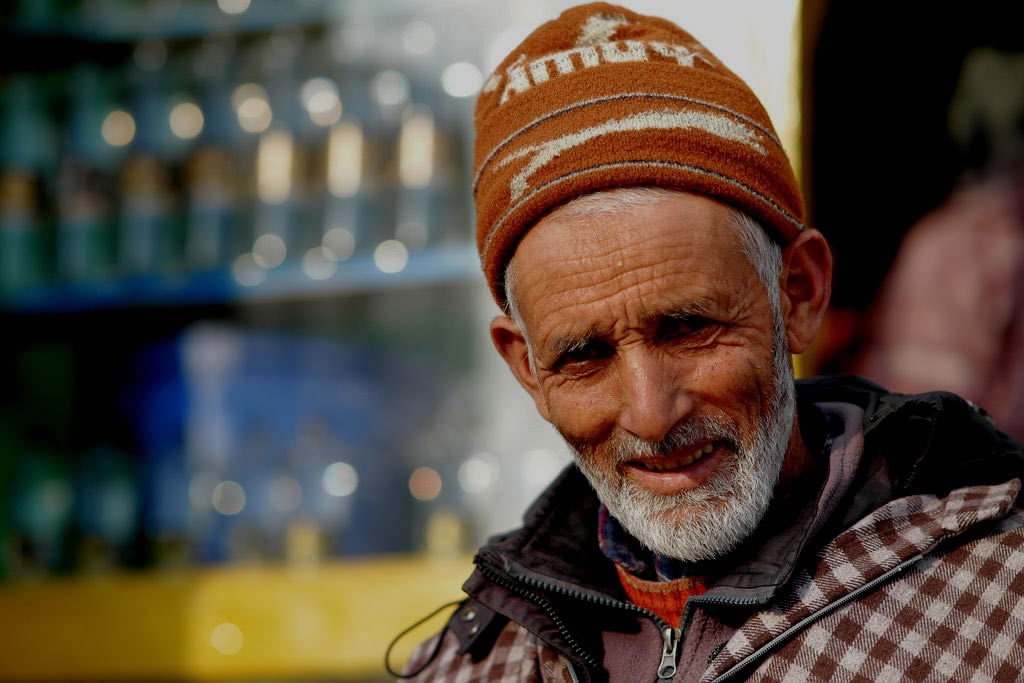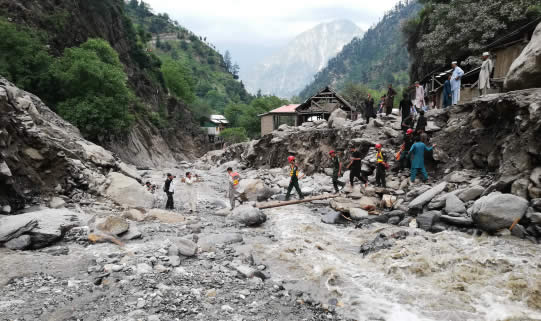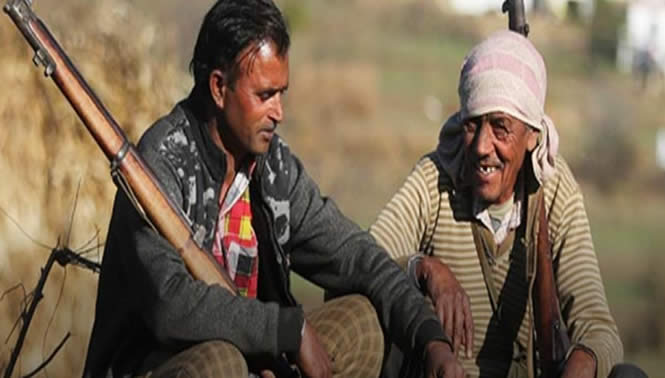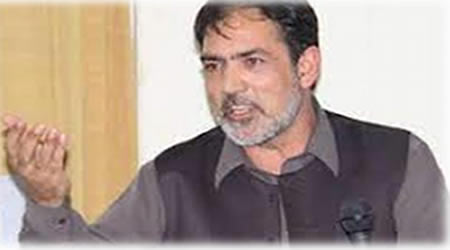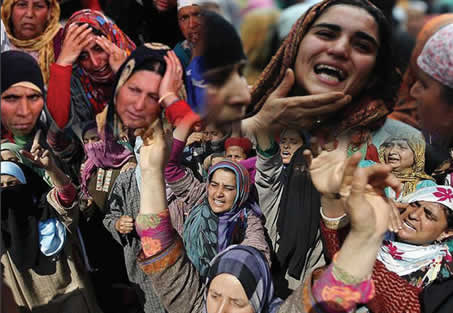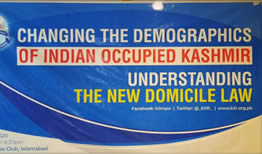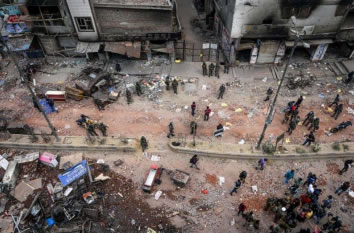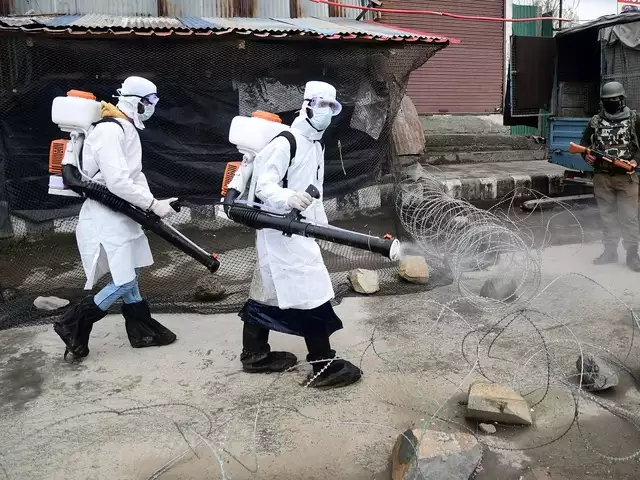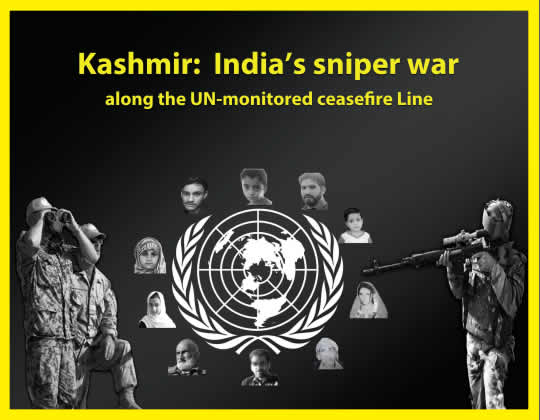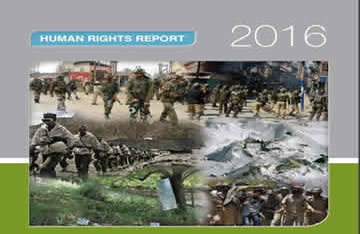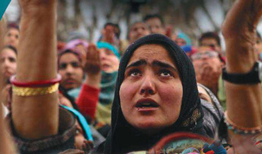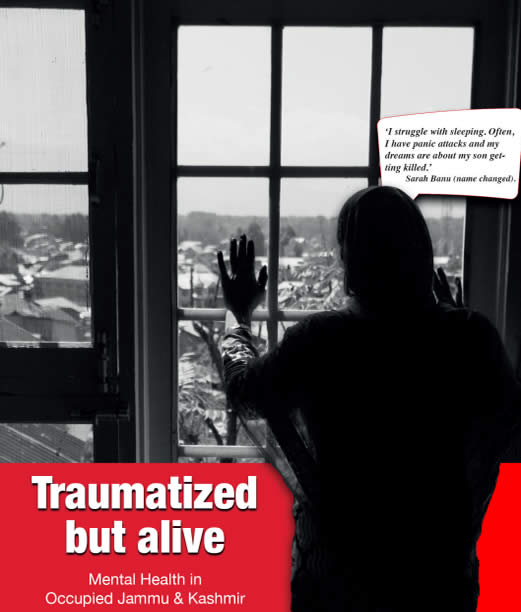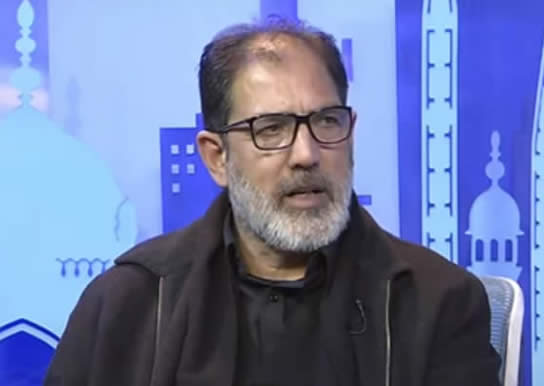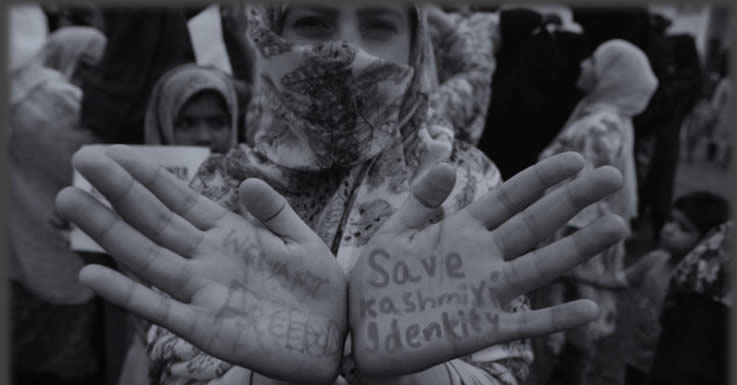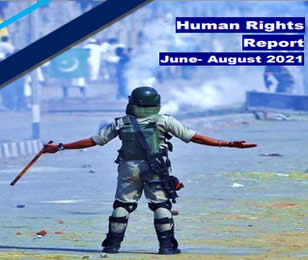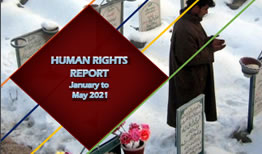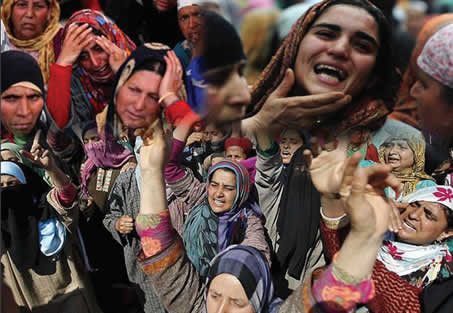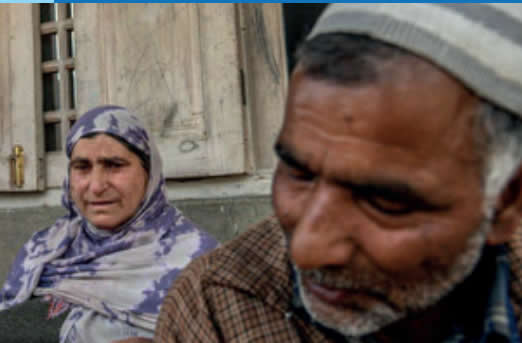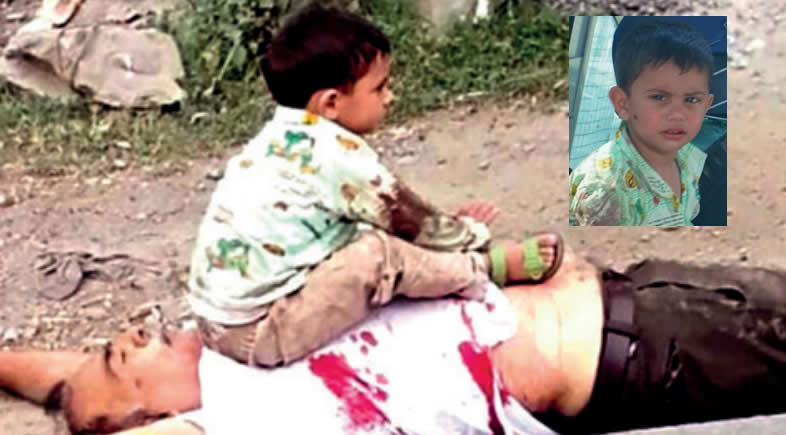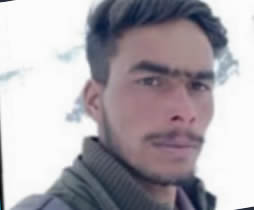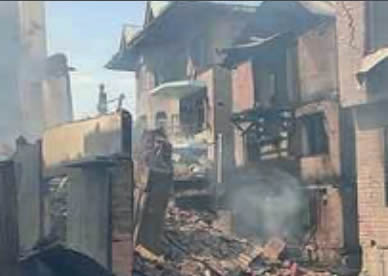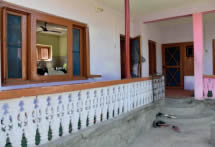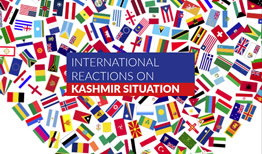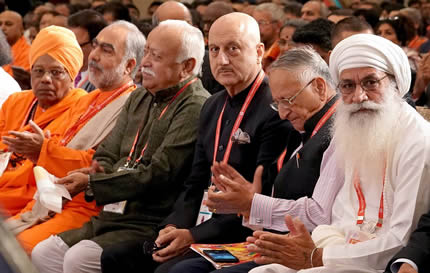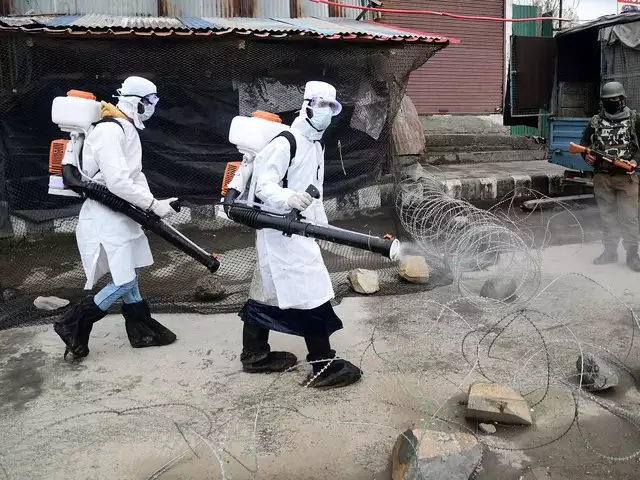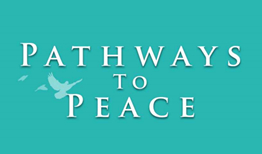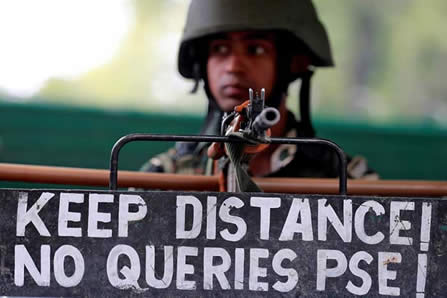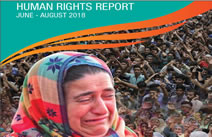Illusion of Peace
Illusion of Peace
BACKGROUND
Kashmir, an internationally recognized disputed territory, awaits final settlement in accordance with the UNSC resolutions. The region has been a subject of dispute between India, Pakistan since the partition of subcontinent in 1947. The region was a princely state ruled by a Hindu Maharaja (king), but the majority of the population was Muslim. According to the partition plan, the Maharaja was obligated to consider both the demographic composition and geographical connectivity of the state in determining its future. Instead, the Maharaja entered into a standstill agreement with both India and Pakistan. While Pakistan agreed and signed the standstill agreement, India did not accept it. Concurrently, there was a pre-existing resistance movement against the Maharaja, which India capitalized on and leveraged against him. Consequently, he was coerced, through a clandestine manoeuvre, tosign the so-called Instrument of Accession.
The ensuing Indian intervention precipitated the first Indo-Pak War of 1947. Subsequently, India referred the matter to the United Nations, resulting in a ceasefire between India and Pakistan and the demarcation of the Line of Control separating the two regions of Kashmir. The people of Kashmir were promised the right to self-determination, but Indian intransigence led to several conflicts. Since then, there have been several conflicts and tensions between India and Pakistan over Kashmir, including the Indo-Pakistani Wars of 1965, 1971 and the Kargil War in 1999. The region has also seen significant anti-India movements and armed struggle with most of groups seeking an end to India’s illegal occupation of their motherland and resolution of the dispute in line with the UNSC resolution call for holding referendum in the region.
76 years down the lane the status of Kashmir remains unresolved, despite the fact that the international community, including the United Nations, has called for a peaceful resolution to the dispute through dialogue and diplomacy. However, the issue, with significant implications for regional security and stability, continues to bedevil relations between the two nuclear neighbours the people of Indian-occupied Jammu and Kashmir continue to suffer.
INTRODUCTION:
The Kashmir conundrum, the roots of which can be traced back to the unjust partition of the subcontinent, has not only been a leading cause of conflict between Indian and Pakistan but also a major cause and consequence of continued bloodshed, violence and abuse of human rights in the region. But the Indian government, notwithstanding the harsh ground realities, is unabashedly engaged in painting a sort of “all is well” portrait of Kashmir-the region where chaos and uncertainty reigns supreme.
This paper seeks to uncover the truths concealed beneath the facade of normality, highlighting the severe difficulties faced by the people of Kashmir and the devastating impact of the ongoing conflict on their lives. For decades, New Delhi utilized the “illusion of peace in Kashmir” as a means to create a literal smokescreen to deflect world attention away from the real issue and the ongoing human rights violations and violence that continue to plague the region. Despite lofty claims of development and progress by the Indian government, the restive region presents a portrait of despair and agony. Described as the most dangerous place1 in the world, the disputed territory (J&K) remains embroiled in an ongoing conflict that continues take a heavy toll on its population.
The soldier-civilian ratio of 1:8 makes it one of the most militarized zones in the world. The massive troops’ concentration and blanket impunity enjoyed by them under various laws is seen as the main reason behind a wide range of human rights abuses, including extrajudicial killings, torture and enforced disappearances. Pertinently, there has been an alarming deterioration of fundamental freedoms and civic space in Kashmir, since the Hindu supremacist regime led by Prime Minister Narendra Modi stripped the region of its special status guaranteed to it under article 370 of the Indian constitution.
The authorities at the helm of affairs used brutal tactics to silence dissent by targeting critics including civil society groups, human rights defenders and independent media. Draconian anti-terror laws such as AFSPA, UAPA and other repressive laws were used to target, harass, intimidate and detain activists, human rights defenders and journalists on fabricated and politically motivated charges in response to their work. Owing to ruthless silencing of dissent and dissidents, the CIVICUS2 Monitor, a global initiative to track the state of civic freedoms, downgraded India’s rating to repressed in 2019, the second worst rating available.
ILLUSION OF NORMALITY: UNMASKING REALITY IN KASHMIR
Over the past seven decades, the authorities in Indian held territory of Jammu and Kashmir have long hidden their actions under the guise of “development and normalcy”, ignoring the harsh realities on the ground. The government’s claim of “All is well in Kashmir” serves a classical example of Machiavellian deceit and a deceptive trend, which perpetuates a false narrative to mask the true conditions in the region. However, such falsifications cannot hide the profound disruption Kashmir has suffered since the abolition of Article 370. Despite alleged progress, the population continues to struggle with socio-political unrest, economic setbacks and severe restrictions on civil liberties.
The occupation authorities usually cling to a narrative of progress that has nothing to do with the lived experiences of Kashmiris. The hollow mantra of development, empty assurances of progress and economic reforms are hailed as signs of change, but the region remains trapped in a web of instability and deprivation. The unilateral revocation of Article 370 in 2019 triggered a cascade of negative consequences, including economic stagnation, increased militarisation and the systematic marginalisation of indigenous voices. While the government boasts of its successes, Kashmir is beset by a multitude of challenges that give the appearance of normalcy. Civil rights activists, politicians and youth are imprisoned and their voices stifled by draconian measures taken under the guise of national security. Since the 2019, major protests in Kashmir have been met with arbitrary arrests and excessive use of force by the police, including protests against the revocation of the region’s special status by the Modi government,
BLOODSHED AND VIOLENCE CONTINUE UNABATED
In the midst of unyielding violence, the Indian government’s claims of normalcy and development ring quite hallow as blood of innocent Kashmiris is being spilt with impunity on the streets by bloodthirsty Indian armed forces, who show no signs of pity, restraint, or remorse in killing non-combatants. According to a news gathering agency, at least 859 Kashmiris were killed by the Indian occupation forces during cordon and search operations since August 2019, whereas 2,399 were injured and 23,210 3 civilians were arrested under different pretexts. The report further revealed that 67 Kashmiri women have been widowed 184 children orphaned and 133 women gang-raped/ molested by the Indian occupation forces during this period of time. Moreover, 1,116 structures have been either arsoned or destroyed by the army during their search operations by using gunpowder or high explosive materials.
EROSION OF PRESS FREEDOM & SHRINKING CIVIC SPACE
In the aftermath of August 05 2019, Kashmir region witnessed a systematic erosion of press freedom and shrinking space for the civil society. It has never been so difficult or dangerous for human rights defenders and media persons to operate in the region. Shutting down independent media, intimidating and harassing human rights defenders and activists, banning peaceful protests, and imposing restrictions on theoperations of independent civil society organizations are amongst the most abhorrent colonial era tactics the India’s human rights abusing government has employed to enable complete silence in Kashmir.
Prominent human rights defenders as well as the political leaders who have been championing the Kashmiris’ political and democratic rights and always questioned the Indian legality have been booked under UAPA act and left to rot in far off jails away from their home land. Suppression of dissent has become endemic, and citizens are subjected to surveillance and censorship that undermine fundamental freedoms. CIVICUS Monitor Report has revealed alarming assault on civic freedoms in Kashmir. 4 The report indicates that Human rights work in Kashmir has practically halted as a result of the arrests of activists and ongoing harassment of civil society organisations and rights advocates through raids and interrogations.
Among high profile campaigners of human rights who have been arrested by the Indian authorities soon after abrogating article 370 included Khurram Parvez,5 who has been detained under the UAPA, was arrested on 22 November 2021 after the NIA raided his house and office for approximately 14 hours, seizing his and his family members’ laptops, mobile phone, and books. Parvez, the Coordinator of the Jammu Kashmir Coalition of Civil Society (JKCCS) and Chairperson of the Asian Federation against Involuntary Disappearances (AFAD), has been a fearless advocate of human rights, documentation, and investigations including in the Jammu and Kashmir region, for over 20 years.
Indian authorities have repeatedly targeted him [Parvez] for his human rights work in an attempt to silence him and intimidate others. The offices and residences of the valley based human rights activists who have been cooperating with international human rights watchdogs since 1990 were raided by India’s National Investigation Agency-the NIA. These raids, which experts believe are part of the BJP government’s official policy to enforce silence on Kashmir, were aimed at targeting those critical voices, who have time and again raised alarm over the stepped-up human rights violations, reckless violence and ongoing slow- motion genocide in Kashmir.
The Asian Forum for Development and Human Rights (FORUM-ASIA),6 while expressing its deep concern over the Indian State’s intensified repression against human rights defenders and journalists as well as its continued human rights violations in Indian-occupied Kashmir, said, “The heavy-handed approach of the Indian Government–led by the Hindu nationalist Bharatiya Janatha Party–has resulted in a crackdown against human rights defenders, journalists, and civil society activists, subjecting them to unjust summons, interrogations, and arbitrary arrests in the Muslim majority region of Kashmir”. The abuse of extraordinary counter-terror laws, it said, have stifled civic space, eroding the environment for human rights work.
The CIVICUS Monitor, an online platform that tracks threats to civil society in countries across the globe, in its report noted that “Human rights work in Kashmir has almost come to a complete standstill due to arrests of activists and continuous harassment of CSOs and activists through raids and interrogations”. This trend, the report said, has increased rapidly since August 2019, when the BJP government abrogated Article 370 of the Indian constitution, which recognised Kashmir’s special autonomous status.
CRACKDOWN AGAINST MEDIA & JOURNALISTS
The crackdown against journalists in Kashmir has been a longstanding issue, with the Indian government and “security forces” being accused of restricting press freedom and targeting journalists who report on the conflict and human rights abuses in the region. Some examples of this crackdown include:
Arrests and detentions: Journalists have been arrested and detained under various laws, including the Public Safety Act (PSA) and the Unlawful Activities (Prevention) Act (UAPA).
• Harassment: Journalists have faced harassment, intimidation, and threats from security forces and government officials.
• Restrictions on movement: Journalists have been restricted from moving freely in the region, making it difficult for them to report on the situation on the ground.
• Shutdown of media outlets: The Indian authorities has shut down several media outlets, including newspapers and TV channels, accused of promoting “antinational” activities.
• Surveillance: Journalists have reported being under surveillance, with their phones and computers being monitored.
• Physical attacks: Journalists have faced physical attacks and beatings while reporting on the ground.
• Legal cases: Journalists have faced legal cases, including sedition charges, for their reporting.
• Restrictions on internet and communication: The authorities in the IoK government has imposed restrictions on internet and communication services, making it difficult for journalists to report and communicate with their sources.
• Forced closure of press clubs: The government has forced the closure of press clubs and journalist organizations.
• Lack of access to information: Journalists have been denied access to information and officials, making it difficult for them to report on the situation in Kashmir.
These actions have led to a significant decline in press freedom in Kashmir, making it difficult for journalists to report on the conflict and human rights abuses in the region. The systematic crackdown on media and journalists preventing them to exercise their right and perform their duties show the erosion of democratic space in the region. The Indian government’s actions are in contravention of its international human rights obligations to protect freedoms of association, expression and peaceful assembly under the International Covenant on Civil and Political Rights (ICCPR).
CRIMINALISING JOURNALISM
A heightened level of surveillance and harassment made it impossible for journalists to perform their duties independently. The media persons in Kashmir remained under a constant threat of being summoned to the police station, questioned by the NIA, or having their homes raided. This climate of fear has led to a worrying trend of self-censorship among journalists.
The case of Fahad Shah, founder and editor-in-chief of the Kashmir Walla, serves as a glaring example of reprisals against journalists. Shah was arrested in February 2022 under anti-terror and sedition laws. He was released on bail and rearrested over other reporting before being charged in March 2022 with the Public Safety Act (PSA), which allows detention without trial for up to two years. Although his detention under PSA was quashed by a court but despite the court orders he remained incarcerated under the UAPA, alongside Kashmiri scholar Aala Fazili,7 for publication of an article on the Kashmir Walla’s website over a decade ago. Sajjad Gul, a trainee at the Kashmir Wall, was detained in January 2022 for a social media post.
Gul’s arrest sparked criticism from civil society and the media fraternity in Kashmir. The Kashmir Press Club termed the arrest as an attempt to criminalise journalism. 8 Journalist Aasif Sultan who has been behind bars since August 2018. Sultan, a former editor of Kashmir Narrator magazine, has been rearrested9 under ‘anti-terror’ law days after his release following five years in jail. Another journalist and the editor of news portal The Kashmiriyat, Qazi Shibli10 has been targeted by authorities. He was arrested in July 2019 under PSA. and imprisoned for more nine months following his news reports revealing the additional deployment of government forces in Kashmir ahead of revocation of Jammu and Kashmir’s special status and the extended communications shutdown in August 5, 2019. He was imprisoned in Bareilly Jail in Uttar Pradesh.
Another journalist and human rights defender Irfan Mehraj was arrested by NIA on 20 March 2023. In June 2023, the UN Working Group on Arbitrary Detention found his detention to be arbitrary, among other concerns, and called on the Indian authorities to release him. Mehraj has produced reporting critical of the impact of Indian government policies in Kashmir, including reports on extrajudicial killings, and has been associated with the Jammu Kashmir Coalition of Civil Society. He was charged under several sections of the Indian Penal Code and the UAPA.
There is also a long list of similar incidents wherein prominent journalists were thrashed, beaten up and tortured after being summoned at police stations and army camps. These pressure tactics reflect a dangerous pattern of intimidation aimed at bullying into silence the media persons who have exposed Indian brutalities and the war crimes being committed by Indian forces.
These outlandish acts of harassment and intimidation are not only illegal but an atrocious assault on the right to freedom of opinion and expression enshrined in a number of international and regional human rights instruments such as universal declaration of human rights, International Covenant on Civil and Political Rights (ICCPR), International Covenant on Economic, Social and Cultural Rights (ICESCR). The illegal arrests of journalists also constitute a flagrant violation of the Article 19 of the Universal Declaration of Human Rights, which says that “Everyone has the right to freedom of opinion and expression; this right includes freedom to hold opinions without interference and to seek, receive and impart information and ideas through any media and regardless of frontiers”.
It is worth recalling here that 29 Kashmiri journalists including Asia Jeelani, Dr. Shujjat Bukhari have lost their lives in the line of duty. Jeelani, a human rights activist & journalist was the first Kashmiri working journalist who was killed in an IED attack on April 20th, 2004 at the age of 30. Dr. Bukhari a leading journalist, political commentator and editor of one of Kashmir’s largest English Dailies “The Rising Kashmir” was gunned down just in front of his office a couple of years ago. But those involved in this heinous crime of murdering journalists, have never been held accountable.
FORCING NGOS INTO SILENCE
India government’s clampdown campaign in Kashmir led to closure of Kashmiri NGOs who have been engaged in social welfare work and other human rights activities in the region. Here are some NGOs that have been virtually banned and forced to stop their work in Kashmir after 2019. Forum for Human Rights in Jammu & Kashmir: This Indian-based civil society initiative was disbanded by the Indian government after it published a 78-page report detailing various facets of India’s violations of Kashmiri people’s fundamental rights and freedoms.
Jammu Kashmir Coalition of Civil Society (JKCCS): JKCCS is a prominent human rights organization that has not been allowed to work after the Indian government revoked special status of Kashmir in 2019. Commenting on the prevailing situation in the region, the JKCCS president and human rights lawyer Parvez10 Imroz said the revocation of Kashmir’s special status and the arrests that followed created a climate of fear. “We had no information about anyone, but months later we got to know we were on the surveillance and no-flying lists,” Imroz added. “We have been banned from traveling since 2019. That was one way of pressurizing us to not do our work”, he maintained.
Association of Parents of Disappeared Persons (APDP): APDP is a human rights organization that has played a leading role in documenting abuses committed by Indian forces in Kashmir. In October 2019, APDP published and report on the use of pellet guns on protesters during a 2016 civilian uprising; Three months later, organisation released a report detailing human rights violations in the region during four months of lockdown since the revocation of Kashmir’s special status. Since then, the APDP has gone silent out of fear of retaliation by Indianauthorities.
Kashmiri Welfare Trust (KWT): KWT is another organization that has been banned by the Indian government. These organizations have been accused of promoting separatism, supporting terrorism, or engaging in anti-national activities, leading to bans, raids, and arrests of their members and leaders. After 2109, these NGOs have not been able to work as freely as before. The fear of reprisals has pushed them into dormancy.
USE OF REPRESSIVE STATE APPARATUS
For decades Kashmiris have been victims of India’s brutalsuppression. The Indian government has been accused of using its repressive state apparatus to crush political and democratic dissent in Kashmir. There have been numerous reports of human rights violations, including:
1. Use of excessive force and pellet-gun use against protesters, leading to injuries and deaths.
2. Arbitrary detentions, arrests, and torture of political activists, Hurriyat leaders, and civilians.
3. Restrictions on freedom of speech, assembly, and movement.
4. Censorship of media and communication networks.
5. Enforced disappearances and killings.
6. Use of military and paramilitary forces to quell dissent.
7. Impunity for security forces, leading to a culture of violence and fear. These actions have been criticized by international human rights organizations, including Amnesty International, Human Rights Watch, and the United Nations.
BANNING LEGITIMATE KASHMIRI VOICES
The Indian government’s campaign to suppress political dissent in Kashmir also led to a complete ban on Kashmiri political parties, which challenge India’s rule over the region and seek resolution of the dispute in accordance with UN Security Council resolutions. At least 14 political parties have been declared as outlawed under the notorious UAPA law by the India’s ministry of home affairs. Here is the list of organisations declared as unlawful associations:
1. Jammat-e-Islami Jammu and Kashmir
2. Jammu and Kashmir Liberation Front
3. Jammu and Kashmir Democratic Freedom Party
4. Jammu and Kashmir National Front
5. Jammu and Kashmir Muslim League
6. Jammu and Kashmir People’s Freedom League
7. Jammu and Kashmir Muslim Conference
8. Jammu and Kashmir Peoples League
9. Dukhtaran –e- Millat
10. And others
Affiliates of these parties have also been facing persecution at the hands of Indian authorities. Most notably, a death penalty has been sought for the JKLF chief Yasin Malik, who was awarded life sentence in 2022. Similarly, personal properties of political activists and their relatives are attached and their kith and kin are harassed under different pretexts.
GROWING SENSE OF FEAR AND INSECURITY
People have no say whatsoever in government policy. Political and religious gatherings are completely banned. The systematic disempowerment and disenfranchisement of the majority population has not only dealt a severe psychological blow to the inhabitants but has also created a sense of fear and insecurity that is widespread in the region. Enforced silence, a neglected dimension of the post- August 2019 developments, is perhaps the biggest threat Kashmiris are currently facing. While the local population continues to live under heavy surveillance, the tools and techniques used by Indian law enforcement agencies to monitor phones are a growing concern for privacy.
People are not allowed to speak out. Civil society activists and even ordinary internet users are arrested just for expressing their views on social media. The mainstream media, who have been denied editorial voices, are not allowed to report the facts on the ground. And those who somehow manage to report and publish the horrific stories of terror and human rights violations are forced to delete the content. This censorship regime, designed to bring Kashmiris to their knees and make them comply with government policies, has led to a sharp decline in civil liberties in the region. While civil rights and liberties continue to be severely curtailed, the people of Kashmir feel that they no longer have a political voice or space.
GROWING UNEMPLOYMENT
Contrary to the claims of the government authorities about the so-called development, the unemployment rate in Kashmir has risen to 38.4% in 2023. A significant rise in the unemployment rate in the troubled region belies the government’s mantra of economic development of the region. The erosion of political agency has disempowered and alienated Kashmiris as authoritarian dictates supplant democratic processes. The introduction of a new residency policy and changes to land laws further disenfranchise indigenous communities, exacerbating economic inequalities and fuelling resentment.
ECONOMIC DECLINE IN JAMMU AND KASHMIR
Contrary to expectations, total investment in Jammu and Kashmir plummeted from $102.8 million in 2017-18 to $46 million in 2021-22. Notably, the sharpest decline occurred in 2019-20, halving from $72.3 million the previous year to $36.3 million, even before the onset of the COVID-19 pandemic. These figures debunk thenarrative that restrictions on land ownership hindered investment in the region.
The abrogation of Article 370 allowed non-residents to purchase and own land in Jammu and Kashmir for the first time. Despite expectations of increased investment, the data reflects a concerning decline in investment post the policy change. This suggests that factors beyond land ownership restrictions have influenced investor sentiment in the region. While the COVID-19 pandemic undoubtedly impacted Kashmir’s economy, the data indicates that it was not the primary driver of the decline in investments. Despite the pandemic, investment levels remained relatively stable in comparison to the significant drop observed post the Article 370 abrogation.
The economic decline in Jammu and Kashmir underscores the multipart rapport of policy decisions and external factors. The abrogation of Article 370, instead of catalyzing economic growth, appears to have had the opposite effect, leading to dwindling investment levels. This calls for a reassessment of government policies and strategies aimed at reviving the region’s economy. The decline in investment in Jammu and Kashmir post the Article 370 abrogation challenges the narrative that land ownership restrictions were the primary deterrent to economic growth in the region. As policymakers navigate the path forward, it is imperative to address the underlying factors contributing to the economic downturn and devise comprehensive strategies to foster sustainable development in Jammu and Kashmir.
EXPLOITATION OF STATE RESOURCES
The exploitation of Kashmir’s resources by outsiders is exacerbating economic inequalities, depriving locals of their livelihoods and fuelling unemployment. For example, mining, quarrying and material contracts were awarded to outsiders while Kashmiri locals suffered from the shortage of materials. Seventy per cent (70%) of mineral extraction contracts in Kashmir were reportedly awarded to non-Kashmiris during these years. The awarding of mining contracts to non-Kashmiris has led to a surge in the cost of materials and forced residents to stop their construction work. Awarding mining contracts to outsiders has also deprived the locals of finding employment.
While the Indian government professes a commitment to development, the reality on the ground contradicts these claims, as Kashmiris are the victims of policies that prioritise control over prosperity. According to a report by a New Delhi-based human rights group, the Kashmir region remains in a sharp economic downward spiral, and there are fears that the middle and lower classes are rapidly losing their purchasing power. Efforts to stifle dissent and create a semblance of normalcy only add to the resentment of Kashmiris. The government’s fixation on optics rather than substance underscores its disregard for the plight of the region’s inhabitants, who continue to suffer systemic injustices and economic deprivation.
ABUSE OF ANTI-TERROR LAWS
The Indian government uses the Unlawful Activities Prevention Act11 (UAPA), a draconian anti-terror law, and other repressive laws to target, harass, intimidate and detain activists, human rights defenders and journalists on fabricated and politically motivated charges in response to their work. Using black laws to persecute rights defenders, suppress legitimate political voices and people’s right to dissent constitute a grave violation of the fundamental rights enshrined under Article 14, and 21 of the Constitutionof India.
• The draconian Act13 brought into force on 14.08.2019, erodes people’s civil liberties, empowers authorities to categorise individuals/ associations as terrorists and detain them without producing any incriminating evidence.
• Under the law the burden of proof is placed on the individual to satisfy the court or government that he/she is not a terrorist.
• The most recent amendment in the Act allows the DG of NIA seizure of property from persons allegedly involved in “terrorism”. It does not specify the stage at which an individual may be designated as a “terrorist”. It runs contrary to the principle of ‘innocent until proven guilty’ in criminal jurisprudence.
ONTINUED CONFLICT & ITS IMPACT ON KASHMIRI LIVES:
The continued conflict has had a significant impact on the mental health and general wellbeing of the Kashmiri people. The local population is feeling increasingly insecure due to the persistent fear of violence. The absence of healthcare, education, and essentialresources worsens the hardships experienced by the people of Kashmir, particularly women and children who are at increased risk during times of conflict.
INDIAN TACTICS TO KEEP THE FAÇADE OF NORMALCY ALIVE
Ruthless suppression of dissent is one of the key tactics the government of India government employed to keep the facade of peace and normalcy alive. However, the GoI has also applied several other measures to create a smokescreen and promote a normalcy narrative in Kashmir, including:
1. Restrictions on media and communication12 Imposing strict curbs on media and communication to control the narrative and limit international scrutiny.
2. Controlled access to Kashmir: 13 Restricting access to Kashmir for international diplomats, media, and human rights organizations to conceal the ground reality.
3. Guided tours:14 Organizing guided tours for diplomats and media to showcase a sanitized version of Kashmir, highlighting economic development and normalcy.
4. Propaganda campaigns: Launching propaganda campaigns to portray Kashmir as a peaceful and prosperous region, downplaying human rights abuses and dissent.
5. Suppression of dissent:15 Cracking down on dissenting voices, including political leaders, activists, and journalists, to silence opposition and maintain a facade of normalcy.
6. Economic incentives: Offering economic incentives and development packages to Kashmiris to buy their silence and cooperation.
7. Intimidation and harassment: Intimidating and harassing Kashmiri journalists, activists, and civilians who speak out against the government’s narrative.
8. Manipulating statistics: Manipulating statistics and data to downplay the extent of human rights abuses, violence, and economic hardship in Kashmir.
9. Military propaganda:16 Using military propaganda to showcase the army’s “humanitarian” efforts and “development” work in Kashmir, distracting from human rights abuses.
10. Fake news and disinformation:17 Spreading fake news and disinformation to discredit Kashmiri voices and international criticism.
These measures aim to create a smokescreen, concealing the ground reality of human rights abuses ,military oppression, and widespread dissent in Kashmir, and promoting a false narrative of normalcy and peace
CONCLUSION:
In conclusion, the fiction of peace and normalcy in Indian-Occupied Kashmir is a carefully constructed narrative that serves to mask the harsh realities faced by the Kashmiri people. The ongoing conflict, military occupation, and suppression of dissent continue to have a profound impact on the lives of the Kashmiri population, perpetuating a cycle of violence and suffering. It is imperative for the international community to acknowledge the ground realities in Kashmir and work towards a peaceful resolution that respects the rights and aspirations of the Kashmiri people.
WAY FORWARD
As Kashmir grapples with a multitude of challenges, the authorities must acknowledge the reality on the ground and prioritise meaningful dialogue. Only through genuine engagement and respect for human rights can the region find a path to peace and prosperity for all its inhabitants. The futile attempts to paint a picture of normality and development will not help the Indian government to hide the crucial realities on the ground. New Delhi simply needs to realise that banning legitimate political expression, silencing people, confiscating their property, firing them and depriving them of their livelihood are anything but normalcy.
RECOMMENDATIONS
Despite the complex nature of the Kashmir dispute, some possible steps towards a resolution could include:
• Dialogue and Diplomacy: India and Pakistan should engage in sustained and meaningful dialogue to address the issue, with a willingness to compromise and find mutually acceptable solutions.
• Demilitarization: Reducing military presence in IoK and tensions along the Line of Control (LoC) and in the region.
• Human Rights: Ensuring the protection and promotion of human rights, including the rights of Kashmiris to freedom of expression, assembly, and movement.
• Economic Development: Investing in economic development and infrastructure to improve the lives of people in the region.
• International Mediation: Involving international organizations or neutral thirdparty mediators to facilitate dialogue and negotiations.
• Plebiscite or Referendum: Allowing the people of Kashmir to exercise their right to self-determination through a free and fair plebiscite or referendum.
• Regional Cooperation: Encouraging regional cooperation and economic integration between India, Pakistan, and other neighboring countries to reduce tensions and promote stability.
• Confidence-Building Measures: Implementing or reviving confidence-building measures like cross-LoC trade, travel, and cultural exchanges to promote peopleto-people contact and understanding.
• Flexibility: Showing flexibility and willingness to compromise by all parties involved, including India, Pakistan, and Kashmiri leadership. It’s important to note that any solution should be inclusive, taking into account the aspirations and concerns of all stakeholders, including the people of Kashmir, India and pakistan.
Related Reports
